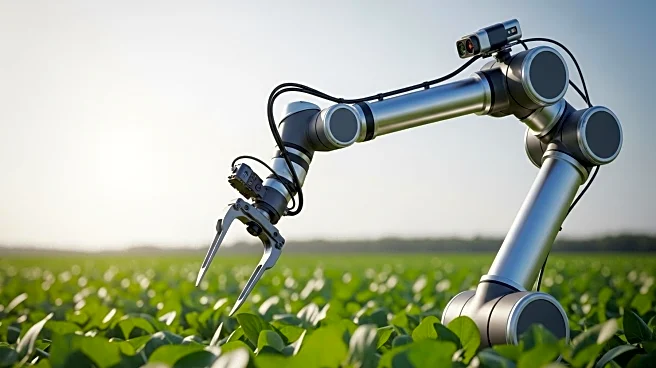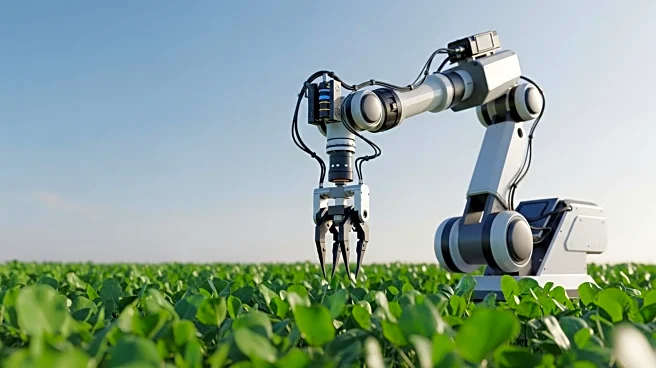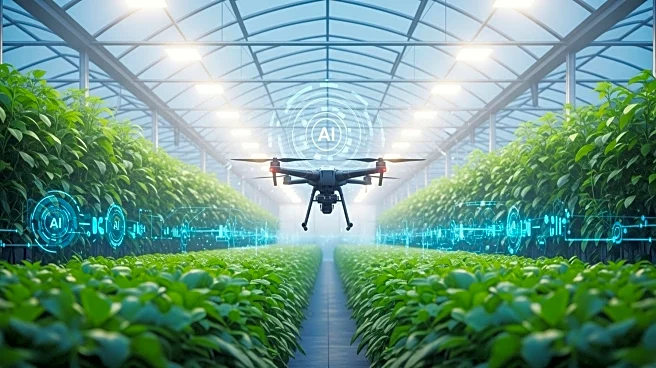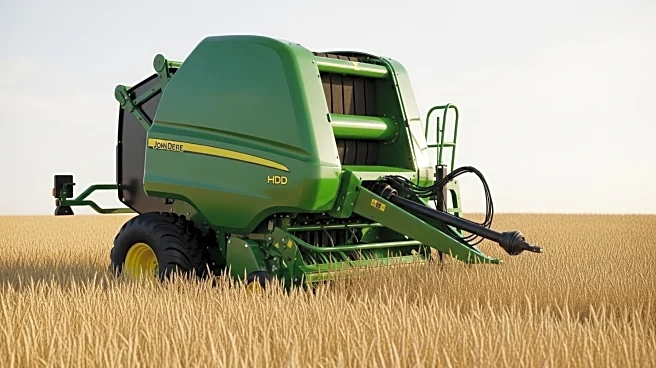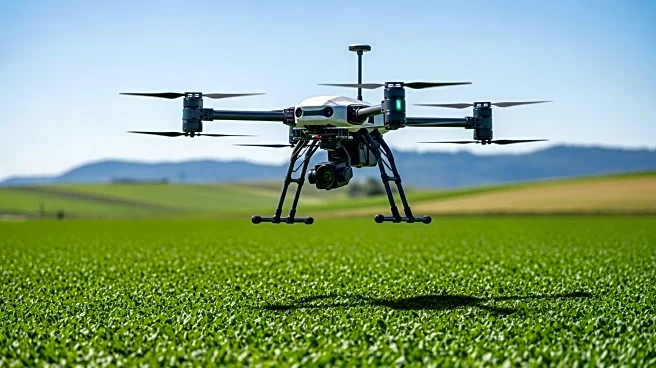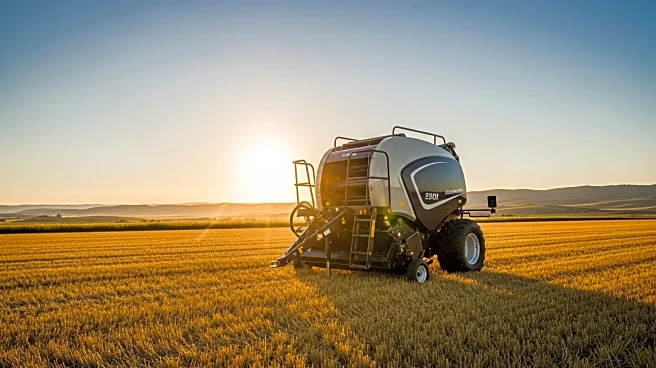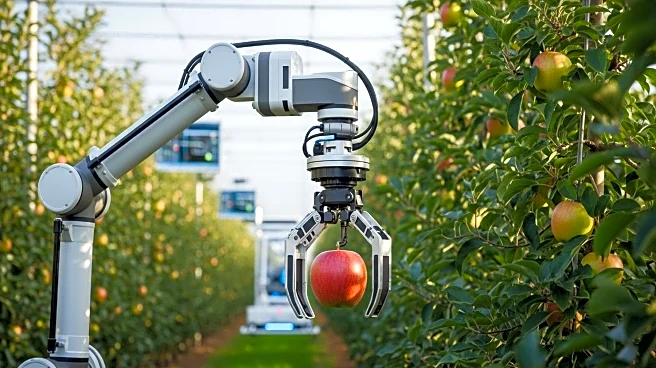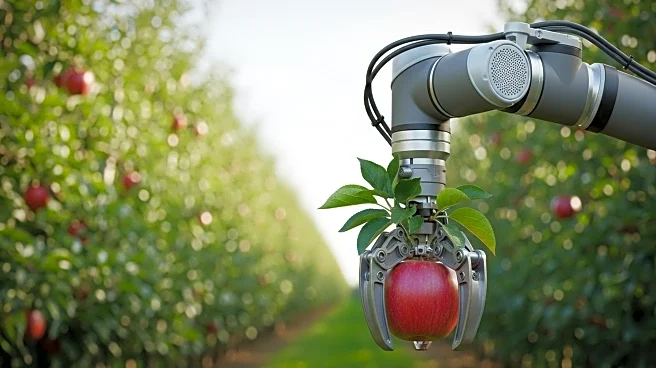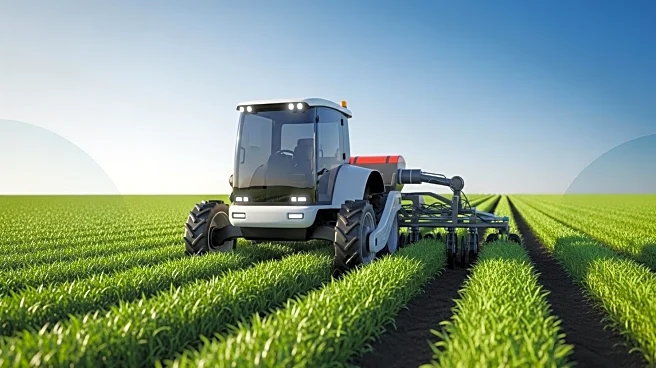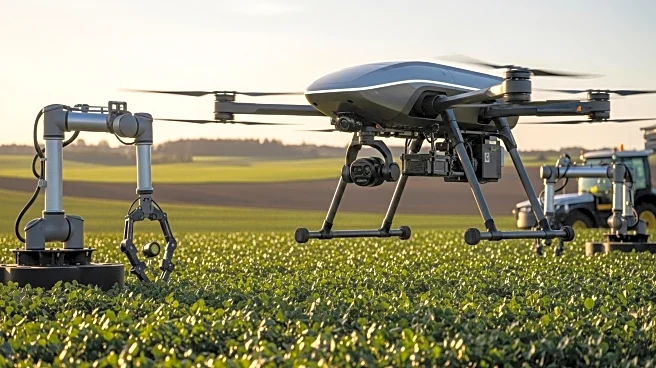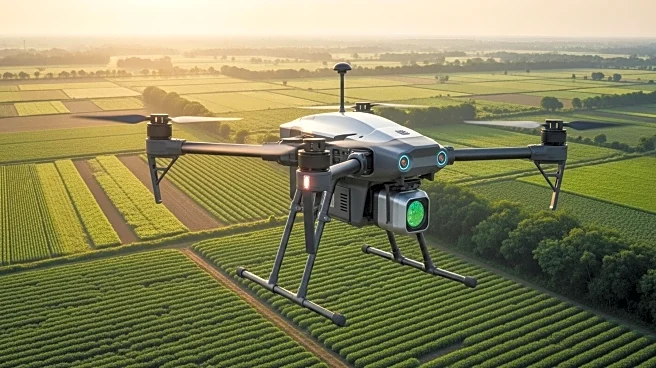What's Happening?
The agricultural robotics market is experiencing significant growth, driven by the need to address labor shortages and rising input costs. Valued at $7.34 billion in 2024, it is projected to grow to $26.35 billion by 2032. Robotics are being used for planting, monitoring, spraying, and harvesting crops, offering operational and environmental benefits. John Deere's See & Spray technology has reduced herbicide usage by 59% and increased yields, demonstrating the financial and environmental advantages of precision spraying. Other robotic applications, such as laser weeding and smart irrigation, provide substantial savings and quick ROI. Autonomous tractors and mobility platforms are being developed to further enhance farm efficiency.
Why It's Important?
The adoption of robotics in agriculture is crucial for improving sustainability and efficiency in farming practices. By reducing labor dependency and chemical usage, robotics offer a solution to the challenges posed by demographic pressures and environmental concerns. The financial benefits are clear, with many systems providing ROI within a single growing season. This technological shift supports investor confidence and aligns with global sustainability goals, making it a compelling area for investment.
What's Next?
The development of autonomous farming systems is expected to continue, with companies like John Deere leading the charge. As robotics become more integrated into farming practices, there may be increased focus on developing systems that can operate in diverse environments and handle complex tasks. Strategic acquisitions and partnerships will likely play a role in advancing these technologies, with the potential for widespread adoption across different regions.
Beyond the Headlines
The integration of robotics in agriculture raises questions about the future of labor in farming and the ethical implications of automation. As robots take on more tasks traditionally performed by humans, there may be shifts in employment patterns and the role of human workers in agriculture. Additionally, the environmental impact of widespread robotic use will need to be carefully managed to ensure sustainable practices.
